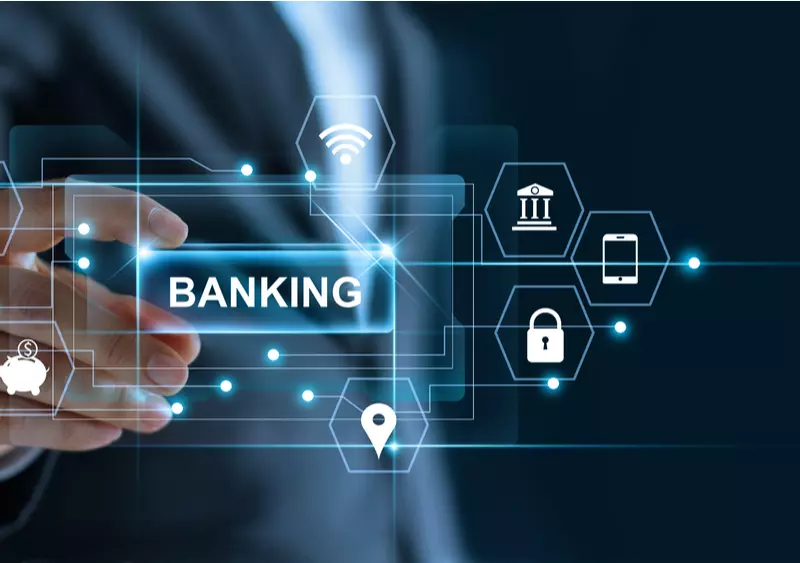How Big Data Is Reshaping Fintech: Open Banking
The global big data analytics market’s annual revenue is anticipated to reach $68.09 billion by 2025, according to Statista. Specifically, the demand for big data in fintech is on the rise. Moreover, big data in the financial technology industry has given rise to open banking. The latter is a system providing third-party access to financial data via application programming interfaces (APIs). Let’s reveal more about big data in finance and open banking.
Big Data in Fintech

Big data represents large, diverse sets of information with ever-increasing growth rates. It’s expanding across all segments of the business world with the help of advanced statistical and mathematical models. These include deep learning, data mining, machine learning (ML), artificial intelligence (AI), predictive analysis. The goal is to help gain better insight to make wiser and quicker business decisions.
To better understand, let’s compare deep learning vs. machine learning vs. AI. Artificial intelligence is the ability of a computer-controlled robot or computer to accomplish tasks that intelligent beings perform. On the other hand, machine learning lies at the root of artificial intelligence. It’s the study of computer algorithms that learn by analyzing available databases. Lastly, deep learning, or deep neural learning, is one of the subsets of machine learning. It uses neural networks to analyze different factors like the human neural system does.
Statista reports that the volume of big data created by global Internet of Things (IoT) connections already made up 13.6 zettabytes in 2019 and is expected to reach over 79 zettabytes by 2025. But what is the Internet of Things?
Think of IoT as a system of interrelated computing devices, mechanical and digital machines, objects, animals, or people provided with unique identifiers (UIDs) or forms of identification. They can transfer data over a network without human-to-human or human-to-computer interaction.
What about financial technology? It represents new tech that improves and automates the delivery and use of financial services. According to GlobeNewswire, the global fintech market is projected to account for $190 billion by 2026.
The Application of Big Data in Fintech
As Yahoo Finance reports, the global financial technology market is expected to have a compound annual growth rate (CAGR) of 26.87% from 2020 to 2026. And big data is one of the driving forces of such growth as it guarantees:
- Useful Fintech Data Analytics
Big data systems analyze incoming raw information and find inaccuracies within the system. As a result, fintech data analytics can help predict customer behavior, deliver sophisticated risk assessments, and make better strategic decisions.
So, it’s no wonder that predictive analytics software is gaining more traction. Such software lets you input the data you already have and get scorecards or risk assessment models. These scorecards can provide fraud and risk detection, targeted advertising, and product recommendations.
- Personalized Approach to Customers
Big data analytics in fintech allows companies to take a personalized approach when handling individual customer cases. Specifically, banking apps rely on big data to collect information about customers and deliver highly customized notifications. Typically, financial companies gather information from multiple channels, including mobile apps, social media, wearables, and smart devices.
- New Methods of Authentication
New methods of authentication in fintech, such as biometric and behavioristic (e.g., mouse movements and keyboard rhythms), are also made possible through large amounts of data.
- Fast Data Processing
Another benefit that big data provides for the financial industry is the ability to quickly process large amounts of information in real-time.
- Accurate Fraud Detection
It also helps to develop accurate fraud detection systems to reveal odd transactions. Specifically, this is a cutting-edge method to detect and prevent suspicious activity.
- Better Risk Management
Big data analytics guarantees better risk assessment by integrating data from various sources. Particularly, it helps identify and predict risks that can harm your business.
Big Data and Open Banking

Fintech is now in a new phase of its evolution. Why? Big data is remodeling the fintech industry and leading to the emergence of open banking. It’s also called “open bank data” and represents a banking practice.
Open banking gives third-party financial service providers open access to consumer banking, transaction, and financial data from banks and non-bank financial institutions. The access is granted using application programming interfaces (APIs).
API is software serving as an intermediary between other pieces of software or acting as the interface between applications. APIs are vital in the banking-as-a-service (BaaS) industry. BaaS is also called Banking as a Platform (BaaP) or banking Software as a Service (banking SaaS).
It refers to programs that enable banks to provide digital services to customers or integrate with other digital software. For example, non-banks can offer credit and debit cards to their customers. And customers can use an app to receive real-time updates on all their transactions.
The Application of Open Banking
Juniper Research reports that the value of global open banking payments is forecast to be $116 billion in 2026. Statista reports that the number of open banking users around the globe is projected to increase at an average annual rate of about 50% between 2020 and 2024. The European market is forecast to be the largest. So what does open banking offer to financial institutions?
- Improved Customer Service
Open banking is closely related to the analysis of data coming from different sources. Such analysis improves customer service provided by financial institutions, thus attracting more clients and helping companies retain existing consumers.
- Control Over Consumer Data
Open banking promises more control over consumer data, and consumers love this. The point is that consumers want to be more aware of how companies handle their private information and open banking promises this.
- Customized Services
Consumers want to receive more customized services. Financial institutions share customer data with authorized third-party providers, such as non-banking financial service providers, allowing them to understand consumer spending habits better. As a result, providers offer highly integrated and customized payment experiences, micro-loans, credit, investment options, and insurance according to consumer needs.
- New Payment Options
The rise of open banking has helped develop central bank digital currencies (CBDC). Central banks are looking to create Cash 2.0, a digital version of cash, granting giants in finance greater control. Cash 2.0, smart money, is meant to be used for more than paying for goods and services: it could change money forever. Central banks could make CBDCs programmable and limit individual CBDC usage. Such limitations could be based on specific situations, types of goods and services, online or physical stores, domestic or international purchases, and purchase size.
The Bank for International Settlements reports that 85% of the world’s central banks are currently studying or piloting CBDCs.
Open Banking: Open-source Code Pros and Cons
Open banking leverages open-source code and components and comes with positives and negatives. Such code is publicly accessible: anyone can see, modify, and distribute it.
The good news is that the open-source code offers continuous integration tools that are tested by a global community over time. However, open source can also include borrowed code and different versions of downloaded components, which aren’t always updated and have vulnerabilities. To address the challenge, financial institutions need to test continuously.
Sum Up
Big data is expanding exponentially. It’s reshaping the fintech industry and resulting in the emergence of open banking, thus marking the shift towards the use of open APIs in the financial sector.
Open banking builds a bridge among banks, third parties, and technical providers, enabling them to exchange data securely and hassle-free. This opens the door to new payment options and innovations and benefits for both businesses and consumers, such as personalized services and better customer experience.



